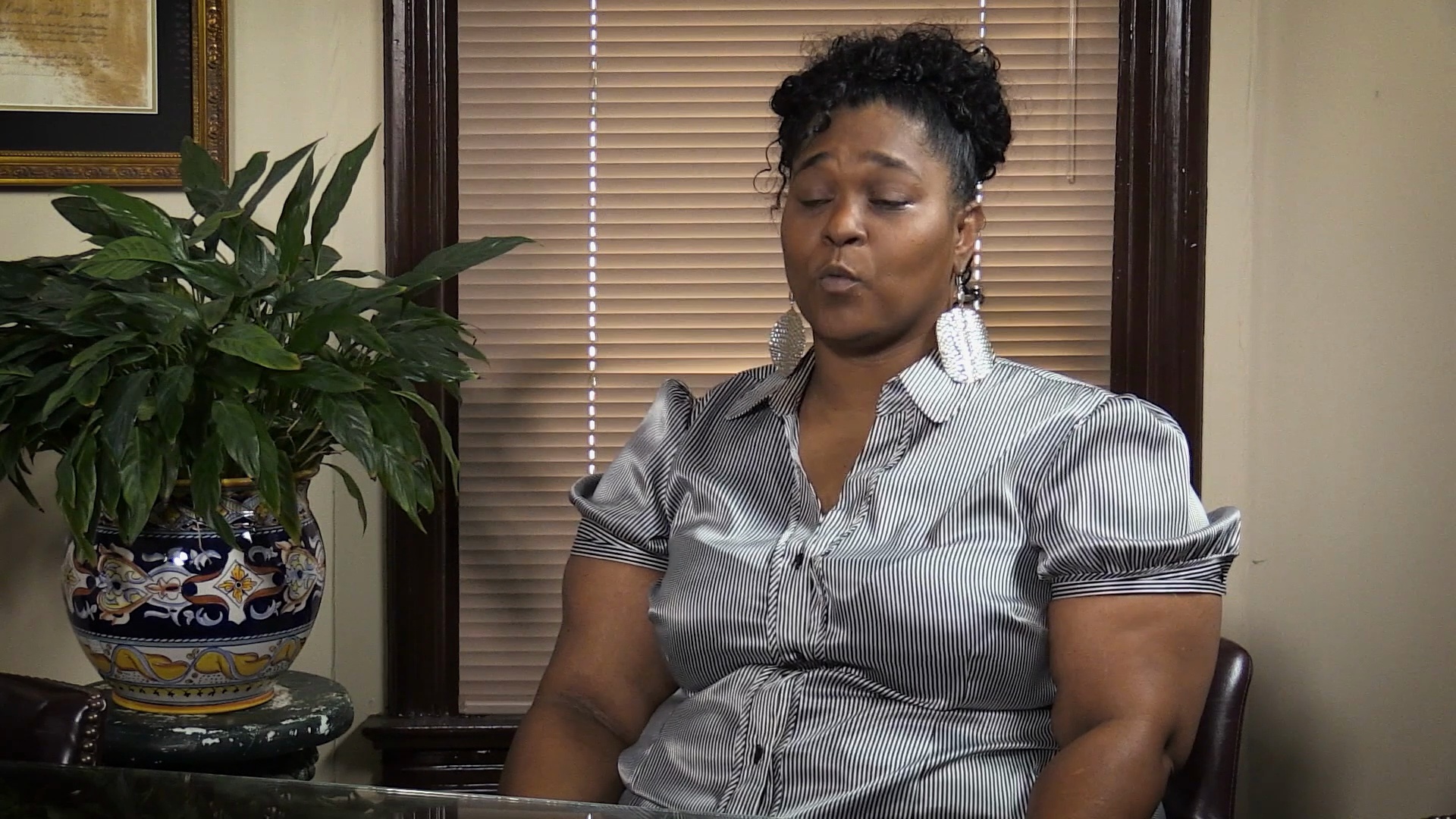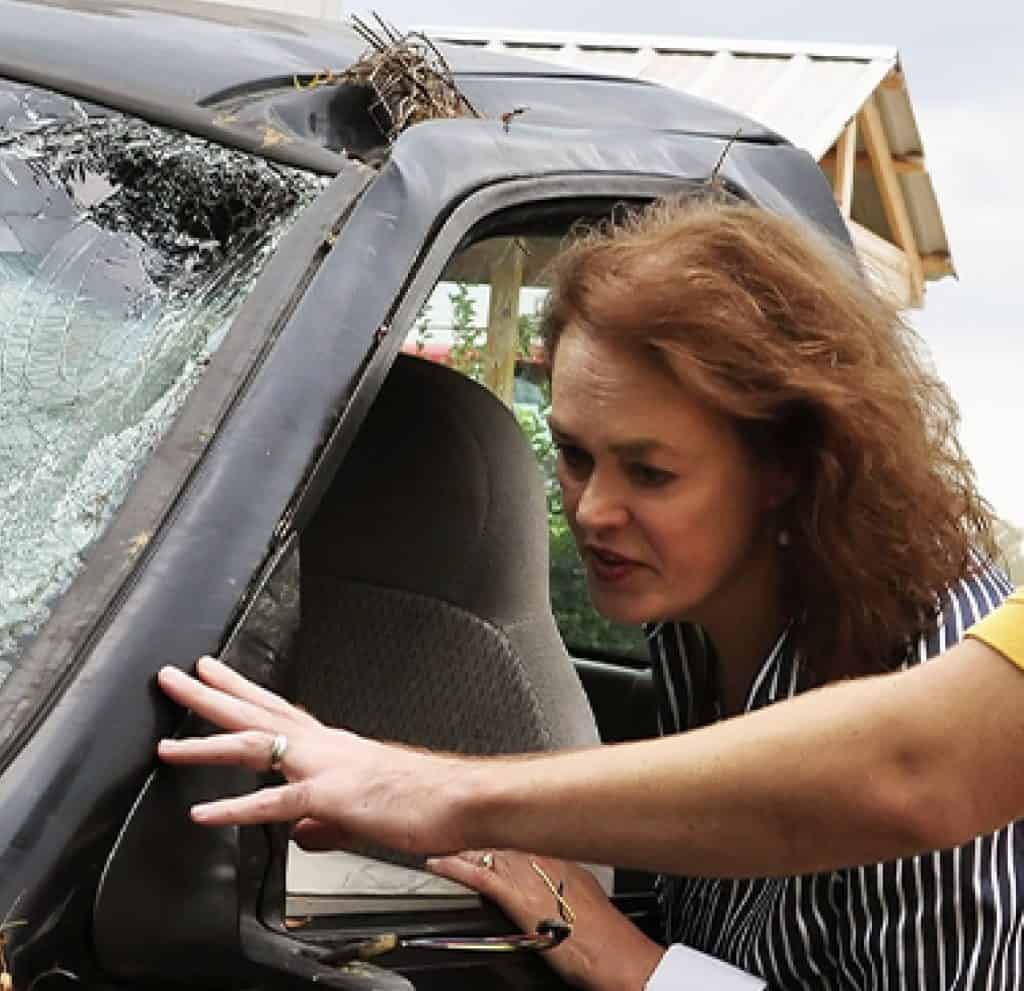
Buses provide valuable transportation for a variety of individuals every day: students getting to and from school, people who need public transportation to reach work and leisure activities, and even tours filled with people. While those buses provide an incredibly valuable service, they also pose a significant danger when involved in an accident.
A standard size school bus, unloaded, may weigh more than 23,000 pounds. Buses used in public transit or large tour buses, especially when filled with passengers and their possessions, can weigh even more. As a result, when buses do cause accidents, they can cause substantial injury to everyone in the other vehicle. If you suffered injuries in a bus accident, contact Flora Templeton Stuart today at (888) 782-9090.
Steps We Take To Get You A Top Settlement
The Cost of Injuries After a Bus Accident
Bus accidents often involve serious injuries due to their larger mass. If you suffer serious injuries in a bus accident, you may face substantial medical costs that can leave you struggling financially long after the accident itself.
Consider the potential cost of these common injuries.
Spinal Cord Injury
When the spinal cord severs completely in a bus accident, the victim may suffer paralysis below the site of the injury. Along with paralysis, the victim may lack feeling or function in organs below the site of the injury. Even after incomplete spinal cord injury, in which the spinal cord does not sever completely, the victim may face decreased motor function.
The severity of that decreased function may depend on the extent of the injury, including where it occurred. With an incomplete spinal cord injury, the costs in the first year alone may total an average of $347,000. Victims with paraplegia may face costs totaling around $518,000, while victims with high tetraplegia may face more than a million dollars of medical costs.
Following a spinal cord injury, many victims also face costs not included in their medical bills. They may, for example, need to make alterations to their homes to live there comfortably: installing a wheelchair ramp, widening doorways, and even remodeling the bathroom to make space for a wheelchair, add grab bars, or use a special shower intended to allow independence. Not only that, many spinal cord injury victims need expensive mobility devices like wheelchairs and modified motor vehicles. Our lawyers can help you recover compensation for these and other expenses.
Traumatic Brain Injuries
Traumatic brain damage can vary widely in severity. At the scene of the accident, victims of traumatic brain injury may fall unconscious. Upon waking, many show signs of confusion and disorientation. Symptoms of even minor traumatic brain injuries can linger for more than a year after the accident itself. More severe traumatic brain injury,  on the other hand, can leave victims with lifelong symptoms.
on the other hand, can leave victims with lifelong symptoms.
Symptoms may include:
- Memory problems, including difficulty with both long-term and short-term memory
- Problems regulating emotions
- Mood swings
- Changes in sensory perception
- Blurred vision or tunnel vision
- Ringing in the ears
- Difficulty with focus and concentration
- Problems completing cognitive tasks
It can cost anywhere between $85,000 and $3 million during a traumatic brain injury victim’s lifetime to recover from those injuries. Many victims may also struggle to remain employed, especially if they struggle with emotional regulation or have trouble with cognitive tasks. Others may find themselves severely limited in the careers they can acquire.
Amputation
On average, the amputation of a foot or leg costs $30,000 to $60,000, depending on the complexity of the operation and any complication in the surgery. Amputees may also face substantial ongoing costs after an accident. Not only do prosthetic devices often require replacement in around three to five years, many amputees require ongoing physical therapy.
Amputees may also require substantial rehabilitative assistance immediately after the accident to learn how to cope with the lost limb and maintain as much independence as possible. Some amputees must have the stump revised several times to minimize pain and maximize function. The more of the limb an amputee can keep, the easier the recovery and the greater the function the amputee may have.
Burns
When a victim suffers burns in a bus accident, medical costs may mount fast. In the case of severe burns covering a large percentage of the body, treatment can cost as much as $10 million. In addition to those astronomical medical costs, many burn victims cannot return to work for a long time after the accident: pain and the risk of infection may keep those victims highly isolated.
Even with proper treatment and plastic surgery, burn victims may never entirely have the same appearance they had before the bus accident, which can cause substantial psychological trauma and leave the victim struggling to leave the house even once treatment is complete. Even after healing, burn victims may also lose mobility around joints due to the scar tissue and nerve damage left behind from the burns.
Broken Bones
Treating a single broken bone without surgery costs an average of $2,500. With multiple broken bones, or if the break requires surgery to set, costs can mount significantly higher. Victims with broken bones may struggle to complete their daily work responsibilities, especially if their workplace cannot offer modifications to the job that allow them to return in spite of their limitations. Victims in highly physical jobs may not return to work until they make a full recovery. Even people who work in office jobs may need time off work for physical therapy, surgery, or to recover enough to wean off of many pain medications.
Sprains and Strains
Even sprains and strains can leave victims with significant costs. While immediate treatment for, for example, a sprained ankle may only cost around $500, the victim may also face a wide range of other significant costs, including lost time at work. Victims of sprains and strains may not return to physical jobs immediately. Torn ligaments and tendons may also require surgical intervention. In addition, victims may require physical therapy to restore strength and mobility in the impacted limb.
Calculating Your Expenses
Following a bus accident with serious injuries, you may struggle to piece together all of your expenses on your own. Contact an attorney after your accident to discuss the expenses you may have faced after your accident, including:
 Immediate medical expenses. Medical expenses may include:
Immediate medical expenses. Medical expenses may include:
- Ambulance transport
- Emergency room treatment
- Hospitalization
- Procedures
- Scans
- Durable medical equipment
- Stay in a long-term treatment facility
In some cases, you may not know what your long-term medical expenses will look like following a bus accident. By talking with an attorney, you can often get a better estimate of your future medical costs, which can allow you to claim those anticipated expenses as part of your bus accident claim.
Modifications to your home or vehicle to accommodate your limitations. Many injuries with long-term implications, including spinal cord injuries and amputations, can cause you to need to make significant alterations to your home to accommodate your injuries. Including those expenses as part of your personal injury claim can help you recover some of those funds.
Lost wages as a result of your injuries. Following a bus accident, some employers will work with you to get you back at work as soon as possible. Others, however, may not have the capacity to accommodate your limitations or to allow you to return to work. Other injuries may prevent you from returning to work until you heal or, in some cases, prevent you from returning to your former profession at all. Even if you can return to work, you may still lose time for appointments, therapy, or further procedures, all of which can cause your time off to add up substantially.
"*" indicates required fields
“We Have Recovered Millions of Dollars for Our Clients”




Who Caused Your Bus Accident?
When a bus accident occurs, often, you may assume that the bus driver caused the accident. To obtain the maximum compensation for your injuries, however, you should consult with an attorney to determine everyone who contributed to your bus accident. Carefully consider the circumstances that contributed to your accident or, in the case of a school bus accident, your child’s accident.
Whether you have a child struck by a school bus while coming home from school or you suffered injuries as the driver of a car in a bus accident, carefully evaluating how the accident occurred can provide you with a clearer view of who contributed to the accident and, therefore, who you may need to file a personal injury claim against to maximize your compensation.
Responsible parties may include:
- The bus manufacturer. Bus manufacturers, like other manufacturers, bear a duty of care to their customers and everyone who rides on those buses. When those manufacturers put out parts or buses that fail to deliver the safe experience their patrons expect, they may bear responsibility for accidents caused by those defects.
- The transportation company. Many transportation companies operate fleets of vehicles every day. Those fleets regular inspection and maintenance to keep them running as well as possible. Some may require drivers to inspect their vehicles at the end of each day. Others may have mechanics to take care of those checks. When the transportation company fails to take adequate care of its vehicles, leading to an accident due to anything from faulty breaks to tire blowouts, it may bear responsibility for injuries caused in accidents due to those defects. The transportation company may also bear responsibility if it continues to employ a driver known to cause accidents in the past.
- A bar or restaurant that over-served the driver of a bus. Particularly on tour buses or long trips in a school bus, the bus driver may stop along with everyone else on the bus to eat and stretch his legs. A single alcoholic drink might not significantly impact the driver’s ability to safely drive the vehicle. If he overindulges, however, it can leave him with all the negative impacts of alcohol on driving ability, including decreased reaction time and poor decision-making skills. If a bar or restaurant knowingly over-serves a bus driver, that facility may bear some of the liability for your injuries.
Covered On This Page

Our team has a five-step process for collecting vehicle accident compensation for victims of bus collisions. We’ll investigate your case, open claims with your health insurance provider, collect your medical records and refer you to great doctors, set up annuities and college funds for injured children, and negotiate for the settlement you deserve.
- Medical expenses, past and future
- Disfigurement, loss of limb, permanent scarring
- Lost wages
- Lose love, companionship, and guidance
- Disability costs or live-in care
- Physical pain and emotional suffering
- Lost capacity to earn
Filing for Compensation After a Bus Accident: How Much Can You Receive?
Following a bus accident, the compensation you receive will vary. The severity of your injuries can significantly change the compensation you receive after a bus accident. You will also note that the limits of the bus driver’s insurance policy, whether provided by personal insurance or by the transportation company, can influence the compensation you can receive. Most people, however, include:
- Medical expenses
- Pain and suffering
- Lost wages
- Lost earning potential
Talking with an attorney can give you a better idea of what compensation you should expect for the injuries you suffered in your specific accident.
Did You Suffer Injuries in a Kentucky Bus Accident?
If you suffered serious injuries in a bus accident, you deserve legal support that will help you file your claim, collect evidence, and pursue the compensation you deserve. Contact Flora Templeton Stuart today at (888) 782-9090 to start the claims process and seek the compensation you deserve for your bus accident injuries.
Covered On This Page
Several types of insurance coverage that will pay if you’re injured in an automobile collision:
Personal Injury Protection: The vehicle you are in is the primary coverage for payment of Personal Injury Protection (PIP) in Kentucky. PIP has minimal limits of $10,000 and pays medical expenses, lost income, home care, and even a portion of funeral expenses. Kentucky automobile accident lawyers reserve these benefits so medical bills and lost wages will get paid. PIP is repaid by the party at fault.
Liability: The at-fault driver pays for injuries caused to another through their liability policy, which in Kentucky has a minimum policy of $25,000 per person / $50,000 per accident and a maximum can be in the millions with a commercial insurance policy.
Uninsured Motorist: If the driver at fault did not have insurance you can collect on your uninsured motorist’s coverage on your own insurance policy.
Underinsured Motorist: If the at-fault driver of the vehicle had insurance but not enough or your injuries are greater than that amount you can collect on underinsured motorists. Flora Templeton Stuart will make sure all underinsured policies are uncovered for maximum recovery.
Negligence in car accidents typically involves a driver failing to exercise reasonable care. As Kentucky car crash lawyers, before we can take action against the liable party, we need to prove that their negligence led to the accident. We do this by establishing the following elements of negligence:
Duty of care: The at-fault party had a responsibility to keep you safe by following all traffic laws.
Breach of duty: The at-fault party breached their duty of care, instead acting negligently.
Causation: The at-fault party’s actions or inactions caused you to suffer an accident and injuries.
Damages: You suffered damages, such as pain and suffering and property damage, because of the at-fault party’s negligence.
Our team will gather evidence to prove negligence, including police reports, witness statements, and surveillance footage.
Under the “no-fault” car insurance system in Kentucky, drivers are required to carry a minimum of $10,000 in Personal Injury Protection (PIP) insurance. Regardless of who causes the accident, PIP covers medical expenses and lost wages. However, if you’re in an accident, you can opt out of the no-fault system to pursue auto injury claims against the at-fault driver and possibly receive more vehicle accident compensation.
Statute of Limitations in Kentucky and Tennessee
In vehicle accidents, there is a limited amount of time to sue. In Kentucky, you have two years after the wreck to sue which can be extended with PIP benefits being paid, as per Ky. Rev. Stat. § 304.39-230(6). In Tennessee, you only have one year to file an auto accident lawsuit. Time limits for minors start when they turn 18. The Statute of Limitations for Wrongful Death cases is governed by KRS 413.140.
Frequently Asked Questions
Why Hire Flora Templeton Stuart Accident Injury Lawyers?
With fifty years of representing clients in Kentucky & Tennessee, our personal injury lawyers are dedicated to obtaining justice for our injured clients. With local attorneys, right here in your community, we provide personal representation with our top attorneys. We meet with our clients to explain the entire process, leave no stone unturned with an extensive investigation to include our experts, and will refer our clients to excellent physicians. We take on the insurance company to obtain a maximum settlement. We can come to you and with offices close by we can travel to our injured clients when they cannot come to us. We treat our clients like family.
How do I pay for you to represent me?
Flora Templeton Accident Injury Lawyers we work on a contingency fee so you won’t pay us unless we win your case. We pay all costs of the case and are not reimbursed unless we collect money for you. you can call us for free, even on weekends with no obligation.
What type of cases do you handle?
We handle all car and truck accidents including commercial trucks, motorcycle accidents, pedestrian accidents, bus accidents, bicycle accidents, drunk driving accidents, work injuries, slip and falls, dog bites, and more. When a loved one has died in a personal injury accident we handle the wrongful death claim to obtain a recovery for the family to get the justice they deserve. Go to our personal injury overview link for more personal injury cases that we handle. since we concentrate our entire practice on personal injury law we are experienced in these areas of practice.
How do I know if I have a case?
Our lawyers will accept a case where we know we can help. You can call us 24/7 for a free consultation and our experienced attorneys will evaluate your injury case without charge. Our attorneys have never represented insurance companies or corporations. We can focus one hundred percent of our practice on helping the injured. Call us today for your free case evaluation. While we cannot guarantee the amount of recovery when you call we can and will give you an evaluation of how we will do everything to collect a maximum settlement.






